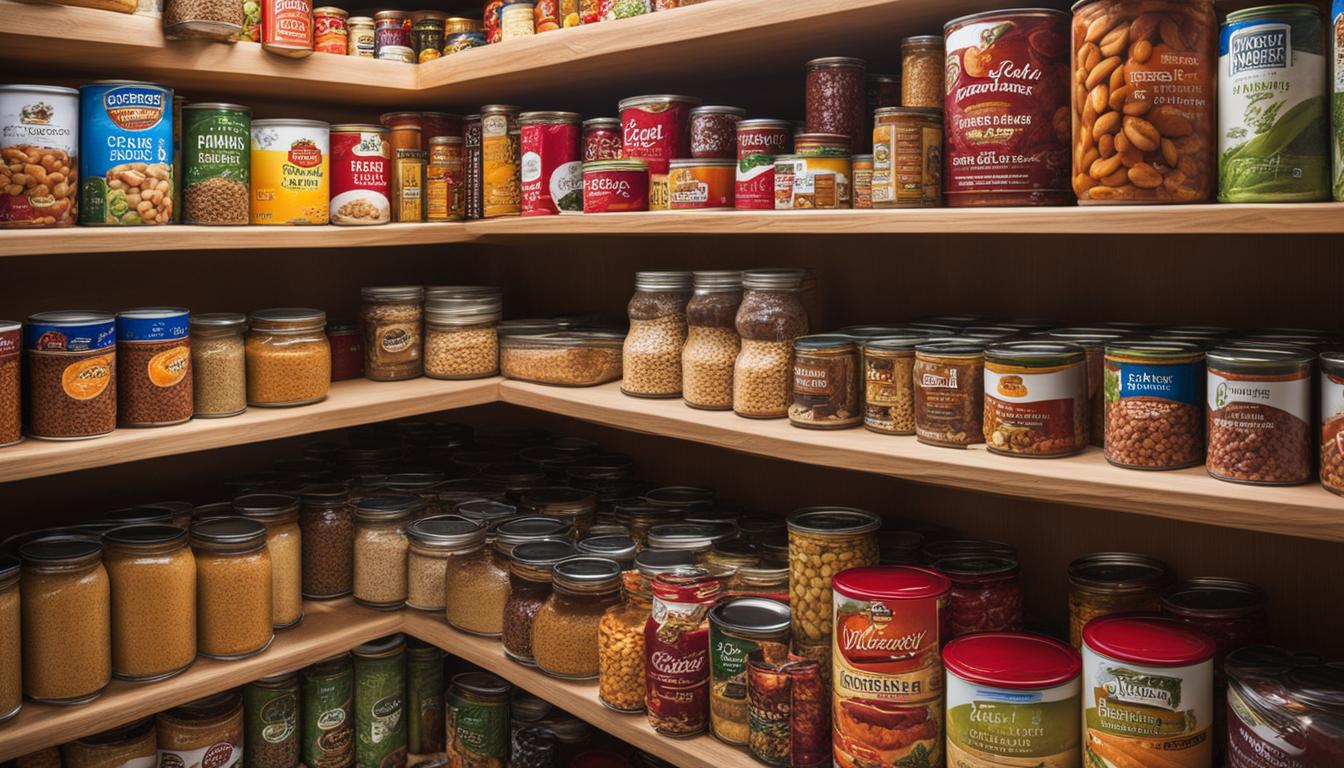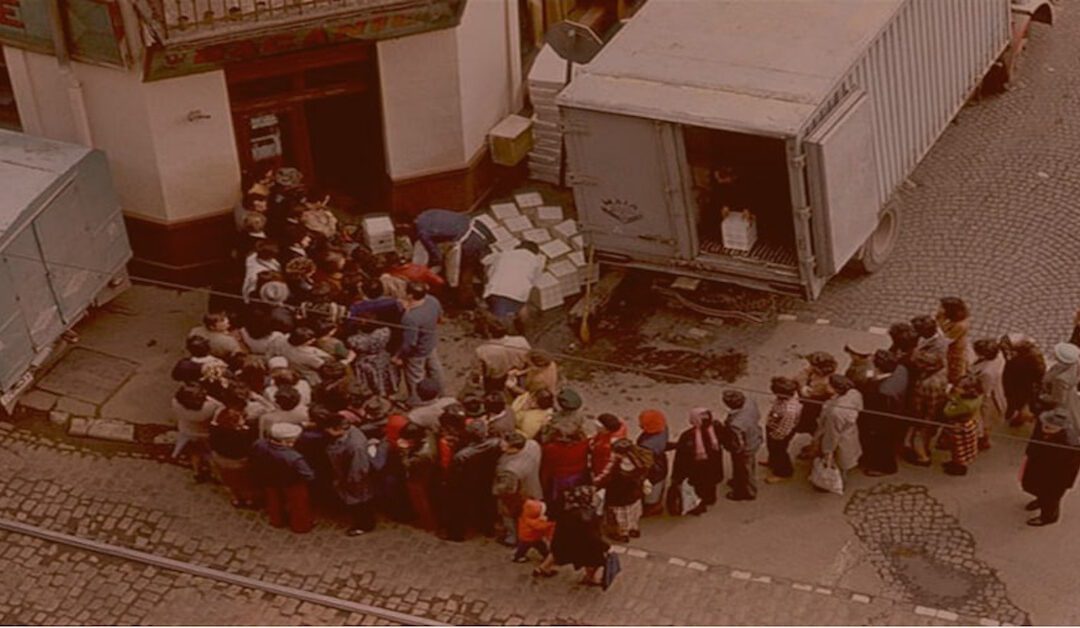Stocking up on emergency foods is essential for preparedness in case of natural disasters or emergencies. It is important to have high-energy and high-protein foods that can provide enough nutrients and calories to sustain you during these situations. Non-perishable foods with long shelf lives are ideal for emergency food supplies.
Some examples of the best survival foods include canned meats, fruits, and vegetables, as well as dehydrated meats, jerky, and dried fruits. These foods can provide essential nutrients and can be stored for extended periods of time.
Having a diverse selection of emergency food supplies ensures that you have a sufficient food supply during an emergency. Here are some of the top best survival foods to consider:
Non-Perishable Food Options for Emergency Preparedness
When it comes to emergency preparedness, non-perishable foods are an absolute necessity. These foods have long shelf lives, do not require refrigeration, and can be easily stored, making them ideal for emergencies. One of the most popular options for non-perishable foods is canned foods.
Canned meats, fruits, and vegetables not only have a long shelf life but also provide essential nutrients. The best part is that they can be eaten straight out of the can, making them convenient and ready-to-eat options.
In addition to canned food, there are other compact food options that are perfect for emergency food supplies. Granola bars and crackers, for example, are lightweight and easy to store.
They provide quick and convenient meals, which can be valuable during emergency situations when time and resources may be limited. These compact options can be easily packed in a bug-out bag or stored in emergency kits, ensuring that you have a readily available source of sustenance.
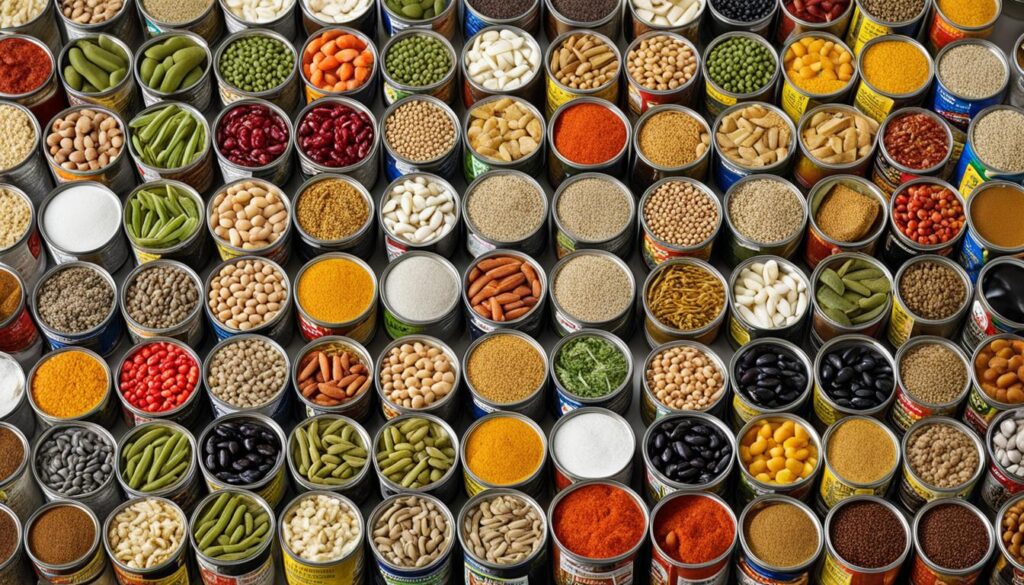
The Benefits of Non-Perishable Foods and Compact Food Options
Non-perishable foods and compact food options offer several advantages for emergency preparedness:
- Long shelf life: These foods can be stored for extended periods without spoiling, making them reliable sources of sustenance during emergencies.
- Easy storage: Non-perishable foods are typically packaged in durable cans or sealed packages, making them easy to store and less prone to damage.
- Convenience: Canned foods and compact options like granola bars require minimal preparation and can be consumed directly, saving valuable time and resources.
- Nutritional value: Many non-perishable foods are fortified with essential nutrients, providing a balanced and nourishing diet during emergencies.
When stocking up on non-perishable foods and compact options, it’s important to consider the needs of everyone in your household, including any dietary restrictions or preferences. Having a diverse selection of food choices will ensure that you are prepared for any situation that may arise.
| Types of Non-Perishable Foods | Benefits |
|---|---|
| Canned meats, fruits, and vegetables | – Long shelf life – Nutrient-rich – Ready-to-eat |
| Granola bars and crackers | – Compact and lightweight – Convenient and quick to consume – Suitable for on-the-go |
| Dried fruits and nuts | – Long shelf life – High in vitamins and minerals – Good source of energy |
Freeze-Dried Foods for Long-Term Emergency Planning
When it comes to long-term emergency planning, freeze-dried foods are an excellent option to consider. Not only do they have a significantly longer shelf life compared to other food options, but they also retain their nutritional value and taste. These qualities make freeze-dried foods an ideal choice for stockpiling emergency food supplies.
One of the advantages of freeze-dried foods is their convenience. Many freeze-dried meal kits are available on the market, offering a variety of meals that can provide a well-balanced diet during emergencies.
These kits typically contain a selection of freeze-dried entrees such as pasta, rice, meat, and vegetables. The meals are lightweight, compact, and require minimal preparation, which is especially crucial in emergency situations where resources may be limited.
Additionally, freeze-dried foods offer a range of benefits when it comes to storage and portability. Due to the freeze-drying process, these foods have a reduced moisture content, making them lighter and more compact. This makes them easier to store and transport, whether you are preparing for a short-term emergency or a long-term survival situation.
The Benefits of Freeze-Dried Foods for Emergency Preparedness:
- Extended shelf life: Freeze-dried foods can last for up to 25 years or even longer, making them an excellent choice for long-term emergency planning.
- Nutritional value: The freeze-drying process helps to preserve the essential nutrients in the foods, ensuring that you receive the necessary sustenance during challenging times.
- Taste and flavor: Freeze-dried meals retain their original taste and flavor, providing a satisfying dining experience even during emergencies.
- Minimal preparation: With freeze-dried foods, you can skip the lengthy cooking process. Simply add hot water to rehydrate the meals and enjoy a tasty and nutritious dish in minutes.
- Dietary diversity: Many freeze-dried meal kits offer a variety of options, allowing you to enjoy different flavors and cuisines even in the midst of an emergency.
So, whether you’re preparing for a natural disaster or building your emergency food supply, freeze-dried foods and survival meal kits should be a top consideration. Their long shelf life, nutritional value, convenience, and portability make them an invaluable asset in any emergency preparedness plan.
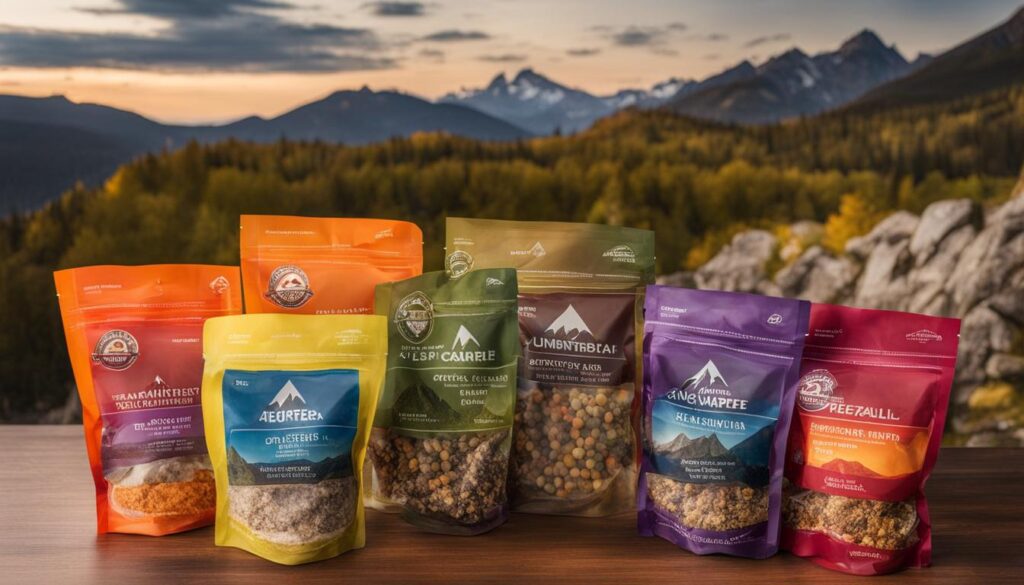
Nutritious and Sustainable Survival Food Choices
When it comes to selecting survival foods, prioritizing nutrition and sustainability is key. Finding food options that not only provide essential nutrients but also support sustainable eating practices ensures a well-rounded approach to emergency preparedness.
Let’s explore some nutritious and sustainable survival food choices that can help you thrive during challenging times.
Nutrient-rich Options
When stocking up on survival foods, opt for nutrient-rich options that offer a balance of carbohydrates, protein, and fats. These nutrients are essential for maintaining energy levels and supporting overall well-being. Consider incorporating the following nutritious foods into your emergency food supplies:
- Canned Beans: Canned beans, such as kidney beans or chickpeas, are not only a great source of protein but also provide fiber and other essential nutrients. They are versatile and can be enjoyed in soups, stews, or as a standalone side dish.
- Dried Fruits and Nuts: Dried fruits, like raisins or apricots, are packed with vitamins, minerals, and antioxidants. Similarly, nuts, such as almonds or walnuts, offer a good source of energy and essential fats. These lightweight and nutrient-dense options make for convenient and nutritious survival snacks.
Incorporating these nutrient-rich foods into your emergency food supplies ensures that you have access to vital nutrients even in challenging situations.
Sustainable Choices
While focusing on nutrition, it’s equally important to consider the sustainability of the food choices for long-term survival. By selecting sustainable options, you not only contribute to reducing waste but also support environmentally friendly practices. Here are a few examples of sustainable survival food choices:
- Minimal Packaging: Look for products with minimal packaging, such as bulk items or those in recyclable containers. Cutting down on excessive packaging reduces waste and promotes sustainable eating.
- Environmentally Friendly Sources: Choose food options that are sourced sustainably, such as those produced through eco-friendly farming practices or by ethical food suppliers. Supporting sustainable food production helps preserve natural resources and promotes a healthier planet.
By incorporating these sustainable food choices into your emergency preparedness plan, you contribute to both personal well-being and the health of the planet.
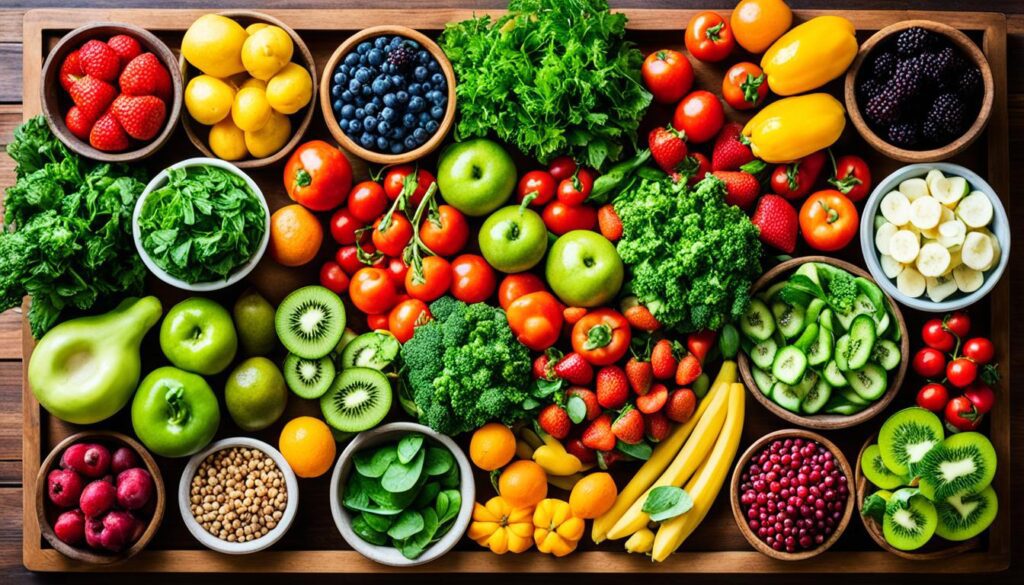
With a combination of nutrient-rich foods and sustainable choices, you can ensure that your survival food supplies not only sustain you during emergencies but also align with your values and principles. Prioritize nutrition and sustainability, and be well-prepared for any situation that may arise.
Conclusion
In times of emergency or natural disasters, having the best survival foods on hand is crucial for ensuring your preparedness. Stocking up on non-perishable foods, freeze-dried meals, and nutritious options can provide you with a reliable and sufficient food supply when you need it most.
One of the key advantages of these long shelf life foods is their ability to be stored for extended periods without losing their nutritional value. Regularly checking expiration dates and rotating your food supplies will help you maintain freshness and ensure that you have access to high-quality survival foods during an emergency.
By being well-prepared with a diverse selection of survival foods, you can have peace of mind knowing that you are ready to face any emergency situation. Whether it’s canned meats, fruits, and vegetables, freeze-dried meal kits, or nutritional options like dried fruits and nuts, having a well-stocked pantry will give you the confidence and security you need.
Remember, emergencies can happen at any time, so it’s important to start building your emergency food supplies today. Invest in the best survival foods that suit your dietary needs and preferences, and make sure to regularly review and replenish your stockpile. By doing so, you’ll be taking a proactive step towards protecting yourself, your loved ones, and your peace of mind.
FAQ
What are the best survival foods for emergency preparedness?
The best survival foods for emergency preparedness are non-perishable foods with long shelf lives. Examples include canned meats, fruits, and vegetables, as well as dehydrated meats, jerky, and dried fruits.
What are some non-perishable food options for emergency preparedness?
Non-perishable food options for emergency preparedness include canned foods such as meats, fruits, and vegetables. Compact options like granola bars and crackers are also great choices for emergency food supplies.
Are freeze-dried foods a good option for long-term emergency planning?
Yes, freeze-dried foods are an excellent option for long-term emergency planning. They have a longer shelf life compared to other foods and can retain their nutritional value and taste.
What are some nutritious and sustainable survival food choices?
Nutritious and sustainable survival food choices include canned beans, which are a good source of protein and fiber, and dried fruits and nuts, which provide energy and essential fats. Choosing sustainable food options can help reduce waste and support sustainable eating practices.
